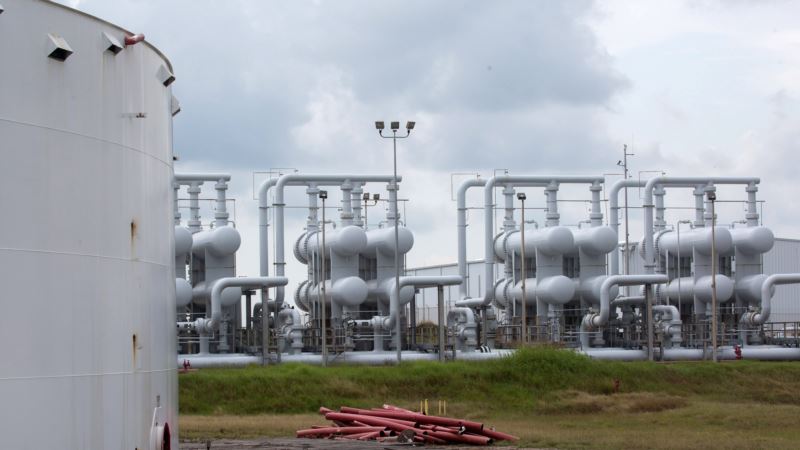Oil bulls trying to push the crude market higher finally waved the white flag Wednesday, triggering the biggest rout in a year on concerns that stubbornly high inventory levels would persist despite supply cuts. Prices had been locked in the tightest trading range in over a decade as traders and speculators piled into bets that oil prices would rise after the world's top producers cut output. For weeks, they shrugged off record high inventories in the United States until Wednesday, when the market finally blinked. Global oil benchmark, Brent and U.S. crude's West Texas Intermediate prices plunged more than 5 percent — the biggest drop since February 2016 — an unwelcome reminder of the darkest days of a two-year price war that left many U.S. shale producers with beleaguered balance sheets. The move also lifted trading volumes to the highest since early December, with over 430,000 contracts in Brent crude for May delivery and more than 911,000 contracts of WTI for delivery in April changing hands. The selloff continued Thursday, as U.S. crude hit a low of $48.79 a barrel in early trading, its first drop below $50 all year, while Brent crude touched a low of $51.60 a barrel, its lowest since Dec. 1. Industry players were divided on whether the price slide would continue or be short lived, given producers' adherence to a pledge to rein in output and prop up prices that have languished for over two years owing to a glut. "The high level of uncertainty that has kept the oil complex trading in a relatively narrow trading range since late last year has been replaced, at least for the moment, by a bearish market sentiment," said Dominick Chirichella, senior partner at the Energy Management Institute in New York. "The discussion will now center around whether or not Saudi Arabia is willing to give back market share to U.S. producers … or are they ready for yet another round of the market share war." So far, there has been no indication that Saudi and OPEC would extend the cuts beyond what is announced or allow the U.S. to claw some of its market share. Suhail bin Mohammed al-Mazrouei, energy minister for the United Arab Emirates, told Reuters on the sidelines of an industry conference in Houston that the plunge in oil prices was temporary and prices would rise as OPEC complies with output cuts. Still, the rise in inventories was "a worry," he admitted. Despite record exports in U.S. crude oil, inventories have ballooned to a new high week after week, threatening a speedy rebalancing of the market. Saudi Oil Minister Khalid al-Falih even admitted on Tuesday inventory drawdowns were taking longer than he had expected for the first two months of the year. The crash Wednesday also tested key technical levels of support established this year and dropped below their 100-day moving averages — a key metric for chart watchers — for the first time since the OPEC deal was announced. "The move down is in oversold territory, but otherwise, there is very little evidence that it will end," Dean Rogers, senior analyst at Kase & Company, said of WTI. A small upward correction might take place first, but odds strongly favor a continued decline toward the next major target at $48, he said, adding that for Brent, the move lower is poised to continue to at least $52.60 and likely $51.60 and lower over the next few days. Still, for the long term, most market participants continue to remain bullish. Trade in options — that give the holder the right to buy or sell at a specific price — signaled that the market does not expect prices to move much lower than current levels. "Their [OPEC's] response may very well be a continuation of cooperation to limit their oil production, perhaps for a little longer than they had hoped and this should help keep a floor under oil prices," said Fawad Razaqzada, technical analyst at forex.com. "Indeed, despite today's sharp selloff, I remain bullish on oil and still expect to see $60-$70 a barrel by the year end."
Oil Bulls Blink After Months of Attempts to Boost Crude Prices






